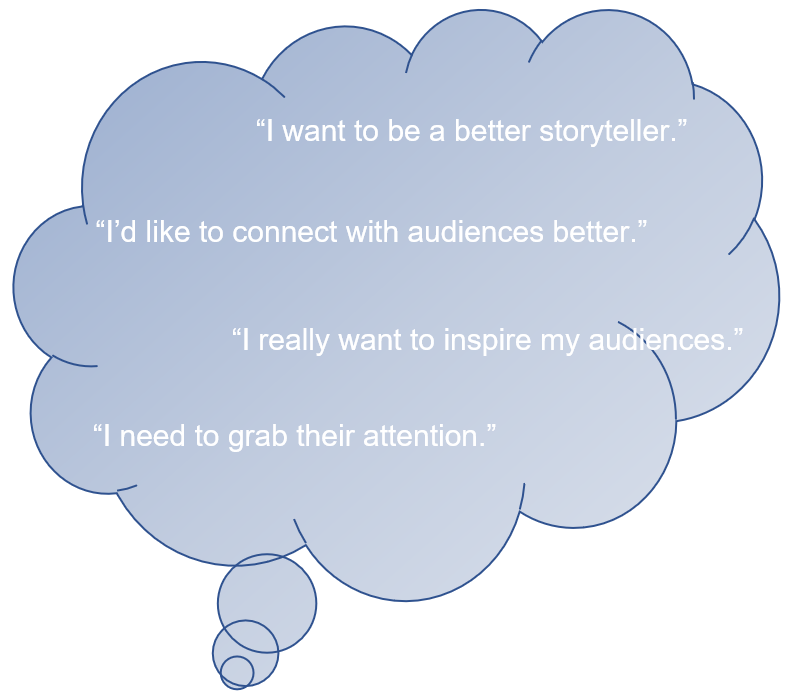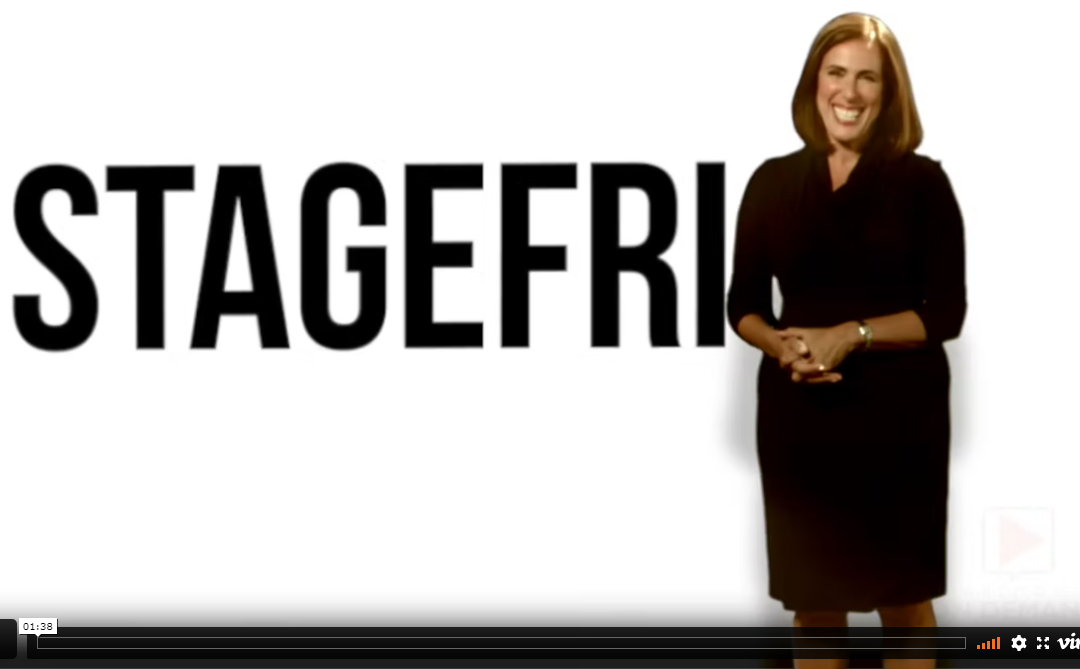
New Agey Advice for Nervousness
 Let’s cut to the chase on nerves and public speaking by first dispensing with the platitudes we typically hear on the subject.
Let’s cut to the chase on nerves and public speaking by first dispensing with the platitudes we typically hear on the subject.
It’s not enough for you to know that the nervousness you feel before a presentation is your adrenaline getting you ready to do well. That doesn’t really help you, does it?
It’s also not enough to know that literally everyone feels the same way in the first two minutes of a presentation. That’s not helpful either, right?
Or that you just shouldn’t worry about it, you’ll do fine. Not very helpful.
Hearing these attempts to rationalize your experience is akin to being terribly sick with the flu and hearing “it’s a really bad flu season this year,” or “it’s been making the rounds, everyone has it.” Those may be true statements but they’re not a cure for your body’s misery.
Given that there’s also no cure for nerves in public speaking, I’d like to offer some new agey advice, a new angle on an old problem. Here are four ways to create your own zen space while delivering a presentation – keeping you present, at peace, and minimizing unnecessary distractions:
Use your breath. Two steps: 1) Deep breath in. 2) Nice, long exhale out. Sounds silly but it’s real. A good long exhale releases tension in your body, which can make you feel better. Never mind specifics about what to do with your abs or lungs, just take some deep breaths and let out a few good, long exhales. It will relieve and release the tension you feel. Repeat, as necessary.
Use your energy. Focus on your audience rather than on yourself. I mean really stop thinking about yourself. Give them, not yourself (and all your crazy nervous thoughts about forgetting what you want to say or what people are thinking about you), your energy. Turn your attention to them, look at them, move closer to them, talk to them. Surrender your attachment to how well you’re doing or to your material. Instead, connect with THEM.
Set an intention. Set an intention for yourself by imagining ahead of time the type of speaker you want to be in the room – e.g. relaxed, conversational, commanding, confident, approachable, entertaining. Picture yourself being that speaker. Your intention becomes a goal, an ideal, you will be setting for yourself and gives you positive imagery to use as a guide while you speak.
Be mindful. Use mindfulness to acknowledge and accept your nervousness, being gentle and compassionate with yourself, rather than push it away or deny it. Resistance creates suffering. Don’t resist, simply accept. Know that your nerves will accompany you on this journey that is your presentation. It’s natural, it’s you, it’s okay. One of the definitions of zen is to be relaxed and not worrying about things you cannot change.
Taken all together – breathing, turning yourself and your attention over to the audience, visualizing an ideal, and accepting rather than resisting your nerves – might not be a cure but employing these techniques over time will make your public speaking nerves more tolerable initially and then eventually, totally manageable.
Om.






